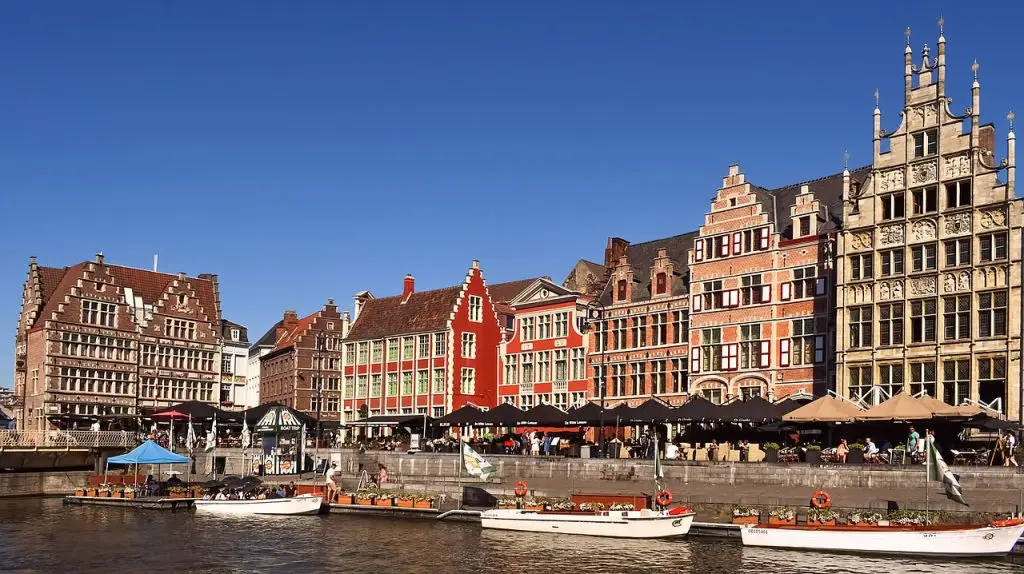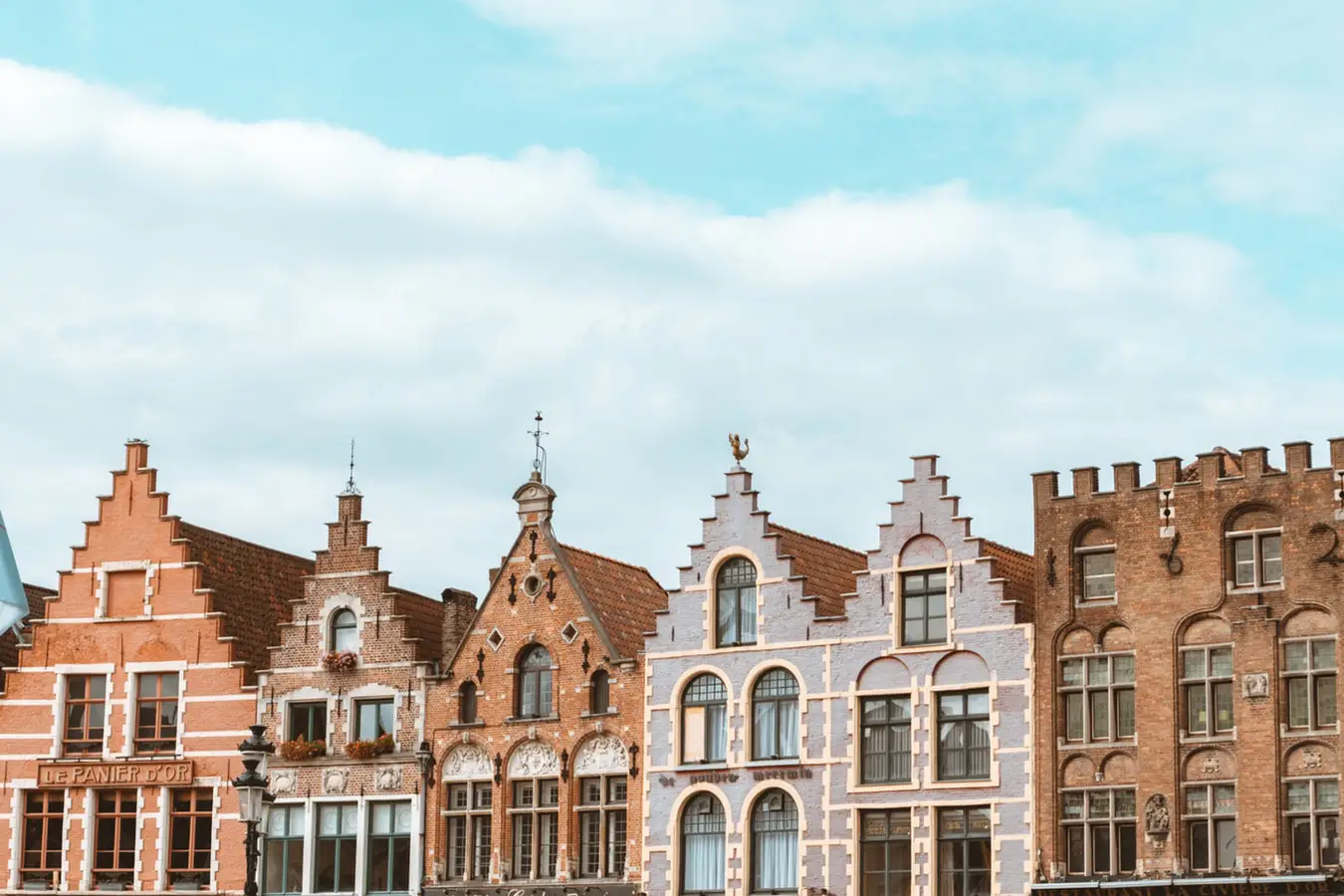Expert travel storyteller Jordan Adkins, founder of InspiredByMaps.com, brings a decade of adventures across 101 countries and 450+ UNESCO sites into rich, off-the-beaten-path narratives, melding ecological expertise with genuine, seasoned travel insights. His full bio can be found here.
Ghent is a vibrant and progressive city that retains the best aspects of its medieval history and architecture. Since the local University’s founding in 1816, the student population in the city has had a major influence; Ghent is largely considered to be the bohemian mecca of the Flanders region.
The historical center is compact and quaint but has allowed the incursion of modernity and progress. While the city center is pedestrian-only, Ghent has made a point not to become a “city-museum” similar to the nearby Bruges.
Though many of the most famous landmarks in Belgium are still found here (you might even recognize a few of them if you have seen any of these famous films set in Belgium). The tourism industry is the largest growing segment of the local economy, but Ghent has been able to fly under the radar and avoid large crowds.
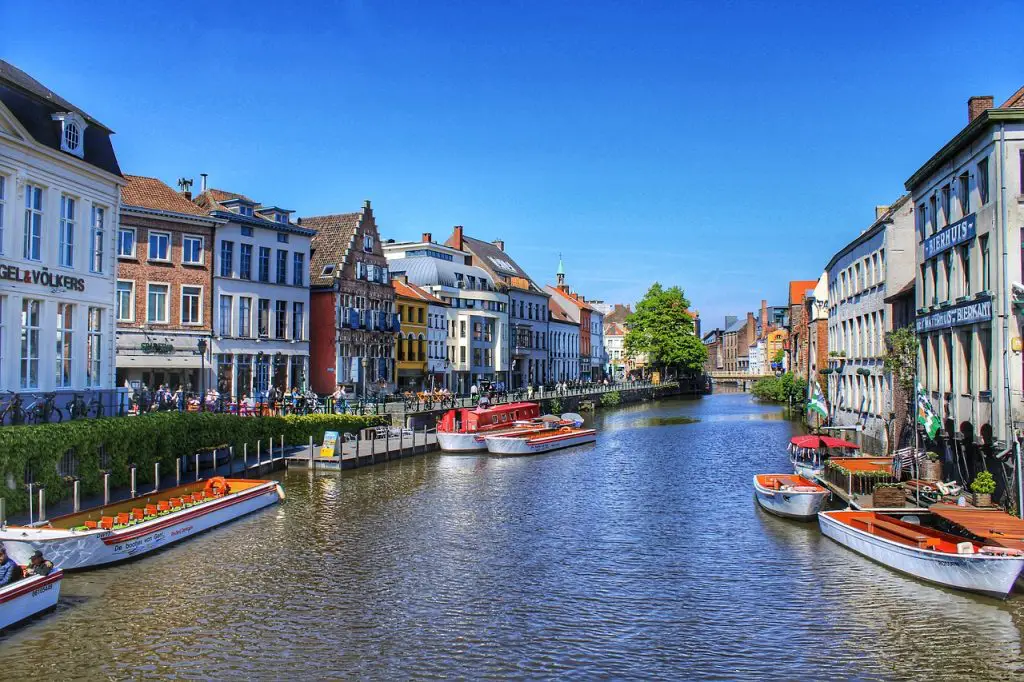
What To Do In One Day In Ghent | The Ultimate 24 Hour Guide!
Page Contents
History And Character Of Ghent
Like many cities in Europe, the history of Ghent can be dated all the way back to Stone and Iron Age settlements. The Middle Ages saw the founding of a few chapels and abbeys in the area, however, they saw raiding and plundering by the Vikings on at least two documented occasions.
However, by the 13th century, it was a bustling city-state that rivaled Paris and outranked both Cologne and Moscow by population. It was the largest European city, north of the Alps, second only to the French capital. The wealth was driven by the rich fields that surrounded the city, ideal for grazing sheep; the wool industry grew to such a size that Ghent eventually had to import raw wool from the UK.
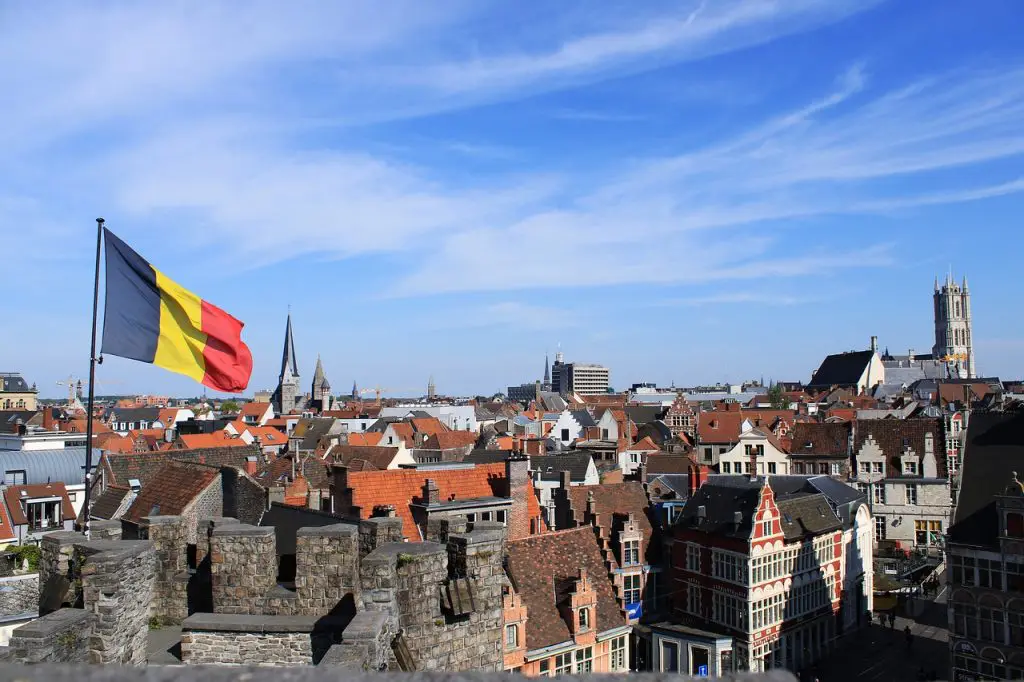
As is so often the story for cities in the region, the wealth wouldn’t last forever. In fact, Ghent saw nearly five centuries of strife; the time between the 15th and 19th centuries was marked by rebellions, revolts, wars, and conflicts. It wasn’t until the year 1800, when the first weaving machine in Europe, arrived in Ghent. The textile industry saw a renaissance that placed the city, again, on the map.
Shortly after, its prominence grew: the Treaty of Ghent ended the War of 1812, the local university was founded in 1816, and new canal connections were made to the sea in 1827. The city was even included under the Kingdom of the Netherlands for around 15 years, before the Belgian Revolution.
While it was occupied by the Germans during both World Wars, it escaped any large-scale destruction.
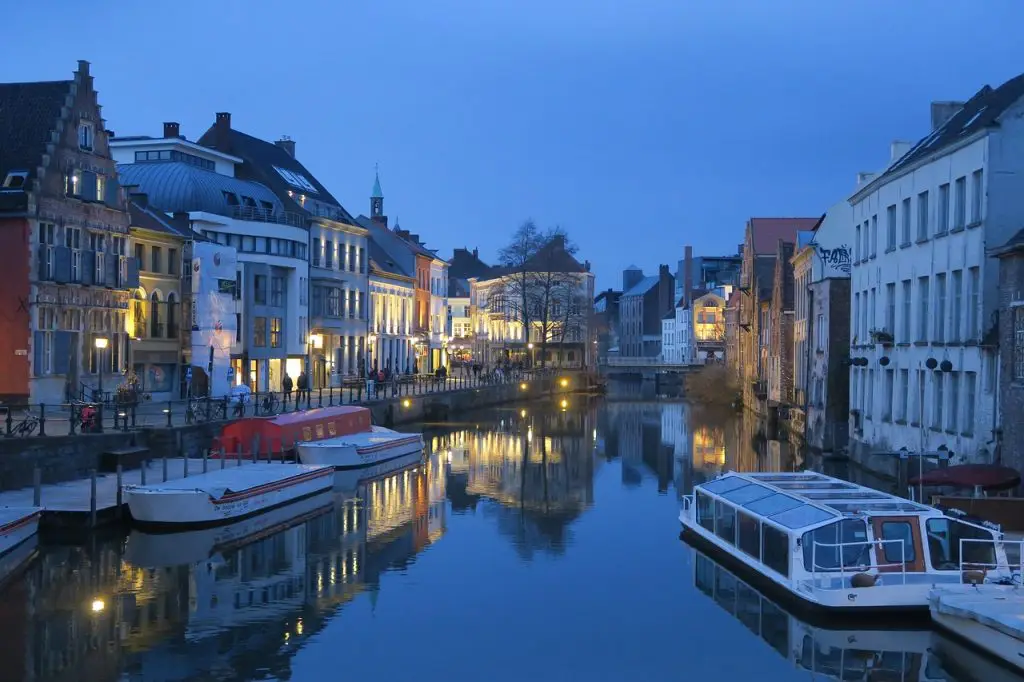
Geography And Climate
Ghent was settled at the fertile confluence of the Scheldt and Leie rivers that flow around and throughout the city. This was both a curse and a boon, with early settlements seeing frequent flooding; the resulting meersen (‘water meadows’) boasted lush grassland that is perfect for grazing sheep.
The weather is also very mild, amenable to year-round activities. As a ‘marine west coast climate,’ Ghent shares weather patterns with other coastal cities near similar latitudes. The proximity to the ocean also generates a healthy dose of precipitation throughout the year.
The temperatures rarely reach extremes at either end of the spectrum. The winter usually sees a mild 5°C, with the thermometer often remaining out of the negatives. The summer is equally maritime, temperatures above 25°C rarely last for longer than a few days.
This results in it relatively low variability, with weather trends lasting at least a few days at a time.

Atmosphere And Approach
Owing mainly to the high student population, Ghent has become a politically Liberal and democratic stronghold. Progressive stances have resulted in a pedestrian-only city center, and appreciation of – but not outright deference to – their medieval history and architecture. Of the Flemish Belgian cities, Ghent is often considered the most modern when compared to Antwerp and Bruges. Its also smaller and more approachable than Brussels.
The medieval architecture remains regardless, with many facades seeing renovation or restoration over the past century. Many museums are dotted throughout Ghent, celebrating both the historical and modern aspects of the city and region.
There are also numerous festivals throughout the year, most notably the Gentse Feesten is a 10-day celebration of local culture, attracting 2 million guests every year.
Over 35% of the local residents have roots that extend outside the Belgian border; over 15% are non-Belgian citizens. The city is home to large communities of immigrants, largely from Bulgaria and Turkey. This is especially prominent in certain neighborhoods, where cuisine and culture from these regions can be appreciated.
Throughout the city, public- and green-spaces are plentiful. Even the cemeteries of Ghent are tranquil and lush areas of exploration and reverence. The largest and most notable outdoor space is the Bourgoyen-Ossemeersen nature reserve, spanning over 230 hectares of Flemish wilderness.
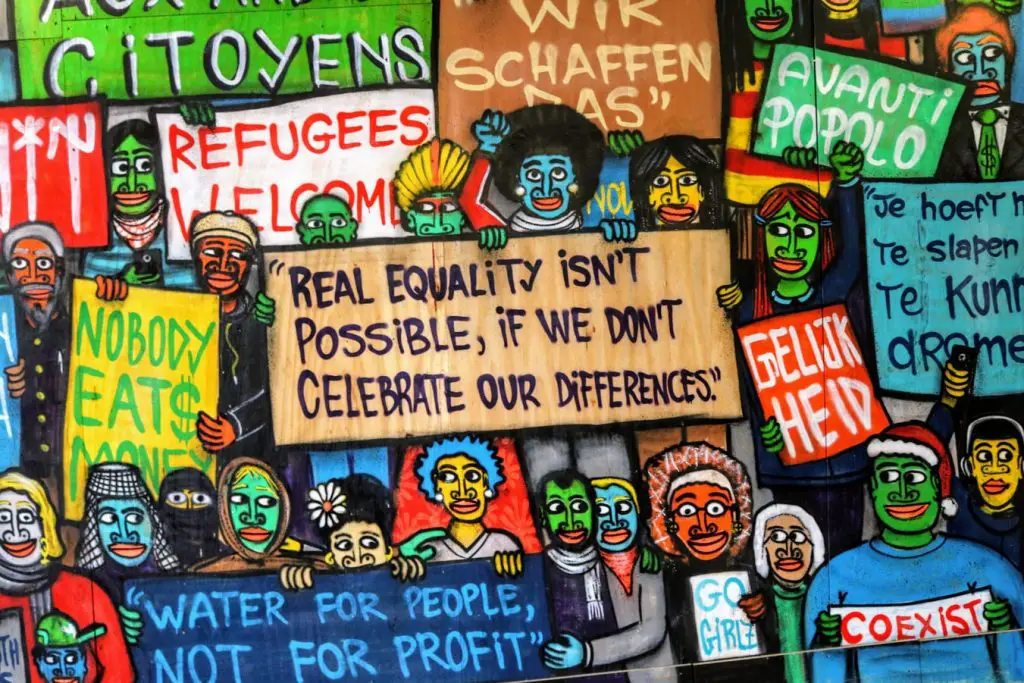
Culinary Attractions
When it comes to food, Ghent and other nearby regions of East Flanders are known for a golden pastry – similar to a bagel – called the ‘mastel.’ They form part of the traditional Catholic feast day of Saint Hubert on November 3rd, with bakers bringing them to morning masses for holy blessings.
Unfortunately, these blessed treats were once thought to protect from rabies, long before the true nature of the affliction was understood.
Aside from the euro-bagels, the city is home to some other notable culinary concepts. The popular Belgian chocolatier Leonidas, known for creamy pralines, was founded in Ghent. Cuberdons or neuzekes (Dutch for ‘noses’) are a trademark purple, cone-shaped, jelly-based candy; the waxy consistency is somewhat of an acquired taste, often a vague raspberry-like flavor.

If you don’t have much of a sweet-tooth, there are still many regional options. Tierenteyn is a fiery local mustard, similar to Dijon; enjoy it with the Belgian specialties of bitterballen and ‘French’ fries. For something entirely different – but traditional – Waterzooi is a fish stew best sampled in Ghent, but there are many variations, often showcasing chicken as the main ingredient.
The city’s tradition of ‘Meat-free Thursdays’ (Donderdag Veggiedag) has placed Ghent under the spotlight in terms of vegetarian offerings. Public canteens that feed local civil servants avoid meat every Thursday, along with public schools.
Local private establishments also promote meat-free options on the day, which has bolstered vast and creative menus around the city; Ghent has the largest number of vegetarian and vegan restaurants per capita in Europe.
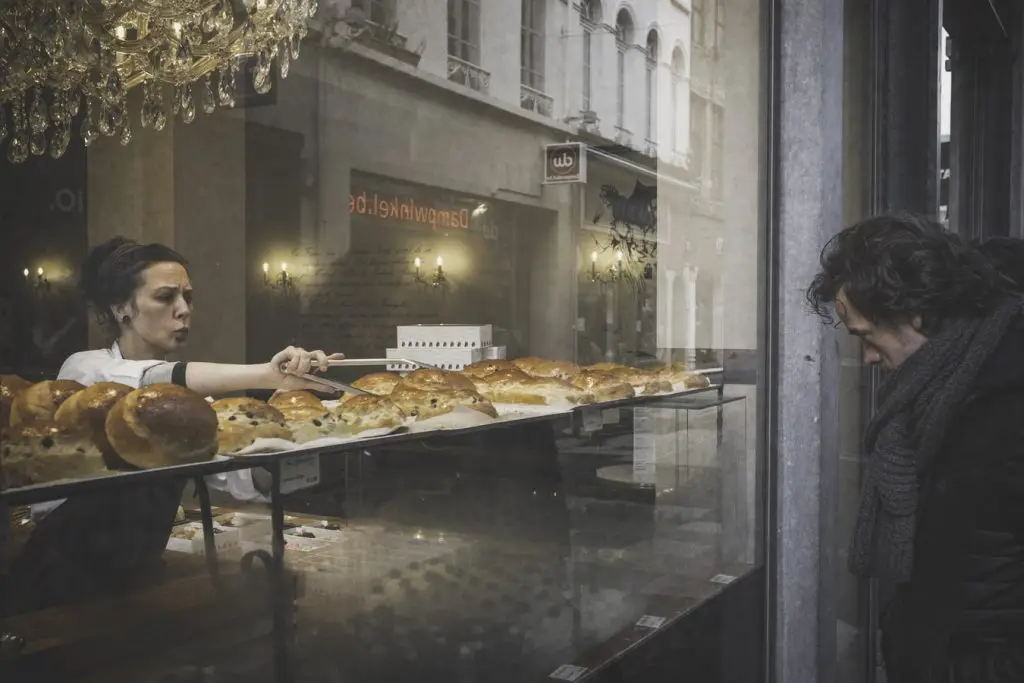
Ghent In A Day
Most of the highlights of Ghent are found within a few hundred meters of the medieval city center. The three iconic towers that are found in this area have stood, in some form, for over 600 years.
Within only a few hours, you can sample the local delicacies and explore the dramatic architecture of the city.
Sint Baafskathedraal (Saint Bavo Cathedral): A glorious 89-meter masterpiece of Gothic architecture that has marked the skyline of Ghent since the 13th century. It is home to the Ghent Altarpiece, a work by the Flemish Master Jan van Eyck and his brother, considered a pinnacle of European art and a world treasure.
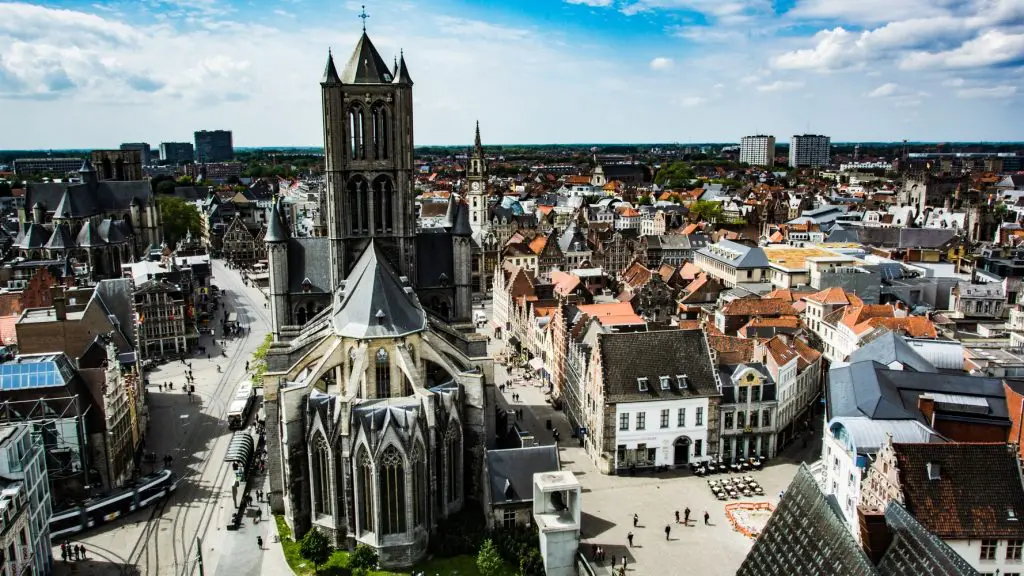
Belfort van Gent (Belfry): Only a few meters down the street stands the second medieval tower of Ghent, the tallest belfry in Belgium. Along with the adjoining cloth-hall, the entirety is a UNESCO World Heritage Site. Although it may be difficult to see on days that aren’t clear, the top is crowned with a gilded Dragon originally brought from Bruges.
Sint-Niklaaskerk (Saint Nicholas’ Church): Within view of the Belfry is the third medieval tower of Ghent, also built in the Gothic style in the 13th century. It was situated near the old trading center of the city, it became popular with local guilds who eventually had their own small chapels built along the exterior of the church. Aside from the impressive architecture, the building also houses a notable French organ.
Wandering around the medieval center of the city, you may have caught whiffs of delectable scents wafting from nearby. Nestled among the bakeries, pubs and chocolate shops are two prime lunch locations. Both are only a few steps away from the ‘church district’, in the shadow of Sint Baafs.
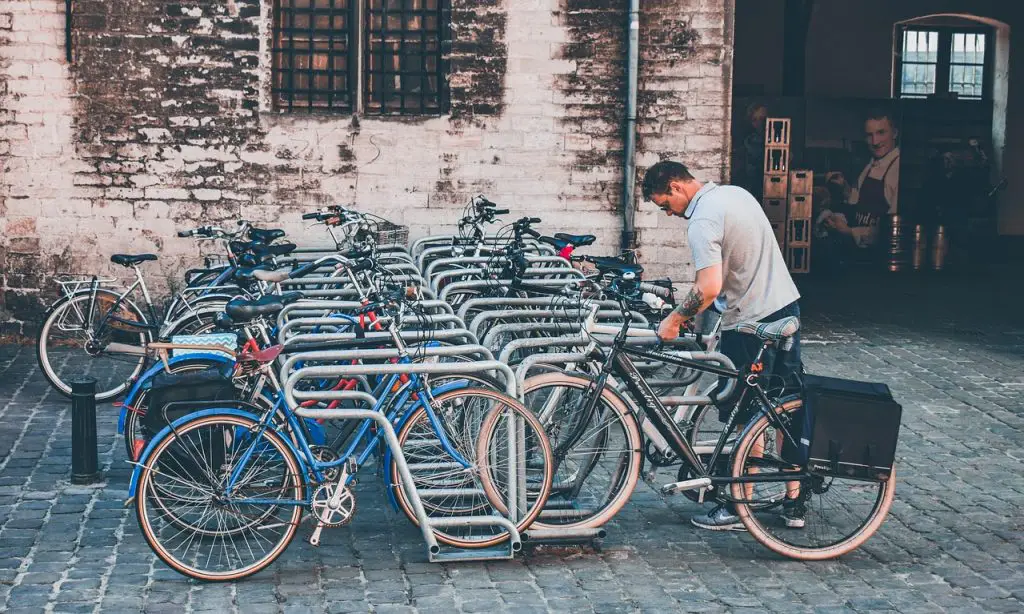
Brasserie Bridge: If you’re looking for a traditional Ghentish lunch, look no further than the quaint pub Brasserie Bridge. Their specialty is Waterzooi, a traditional local stew made with fish from the nearby rivers and ocean. Their offerings are known around the city, it may be worthwhile calling in advance to reserve a spot for lunch.
Vrijmoed: Graced with two Michelin stars, you’d be lucky to get a lunch-time reservation at the last minute, but it’s well worth calling in advance. While it may be out of your price-range, lunch starts around €60, a relatively reasonable cost for any multi-starred establishment. A memorable Belgian lunch awaits.
After gorging on the local fare, the rest of the city opens to exploration. There is much more to see outside of the traditional city center. Wandering down towards the Leie river, the notable architecture continues toward the historical area of trade and industry.
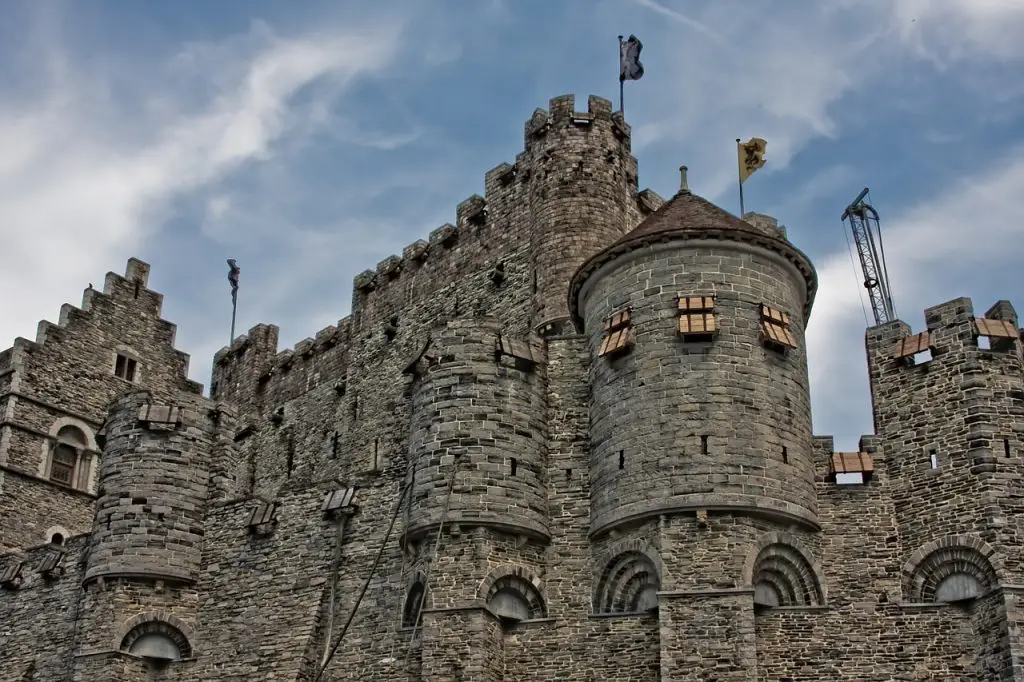
Graslei (Grass Quay): A bustling, historic quay on the right bank of the Leie. Across the water is the sister quay Korenlei. They comprised the traditional harbor of the city and is now a tourist hotspot, crammed with patios and vendors. The iconic gable-roofed houses – that typify Flemish and Dutch canal cities – line both sides.
Gravensteen (Castle of the Counts): This medieval castle dates from the 12th century and served as the home of the Count of Flanders until 1353. It’s been repurposed over the years as a prison, mint, court, and even a cotton factory. It saw major renovations shortly before the First World War and is now open to the public in all its splendor.
Museum voor Schone Kunsten (Museum of Fine Art): If you’re spoiled for time, or have more than a day in Ghent, this excellent museum lies only a few kilometers outside the city center. It proudly displays many works from the Flemish Masters alongside an impressive collection of sculptures.
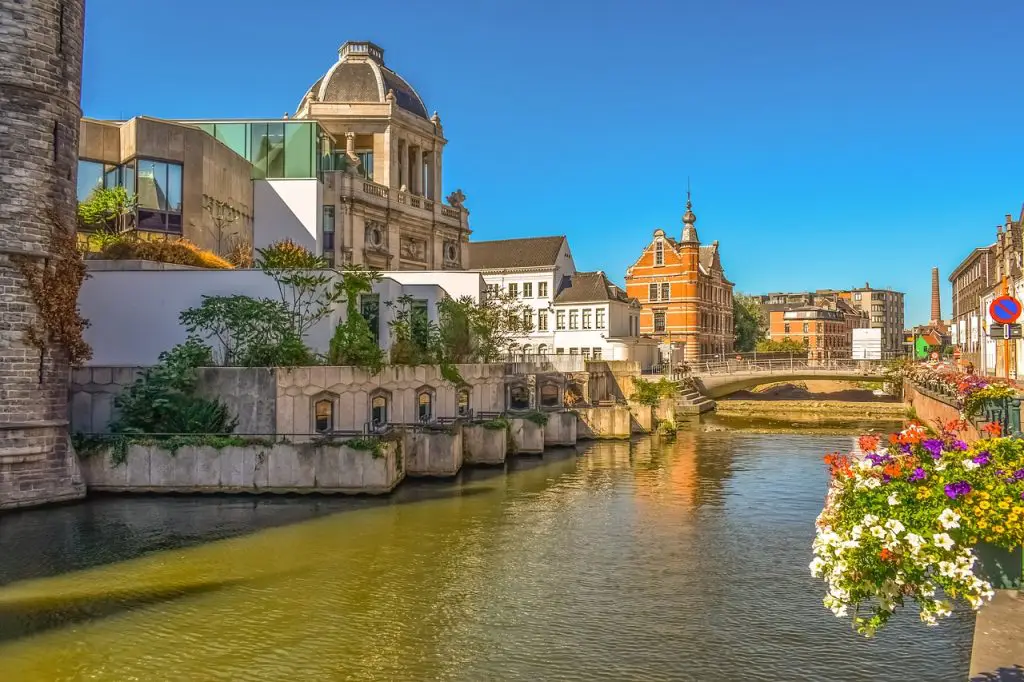
The Final Word On A Quick Trip To Ghent
Ghent is perfect for a day trip, most of the city’s highlights can be seen in only an hour or two. You can rest assured that no aspect of quality of life has been spared to maintain rigid rules protecting history and architecture.
Ghent is a thoroughly modern city with all the breathtaking sights that mark medieval Flemish cities.
